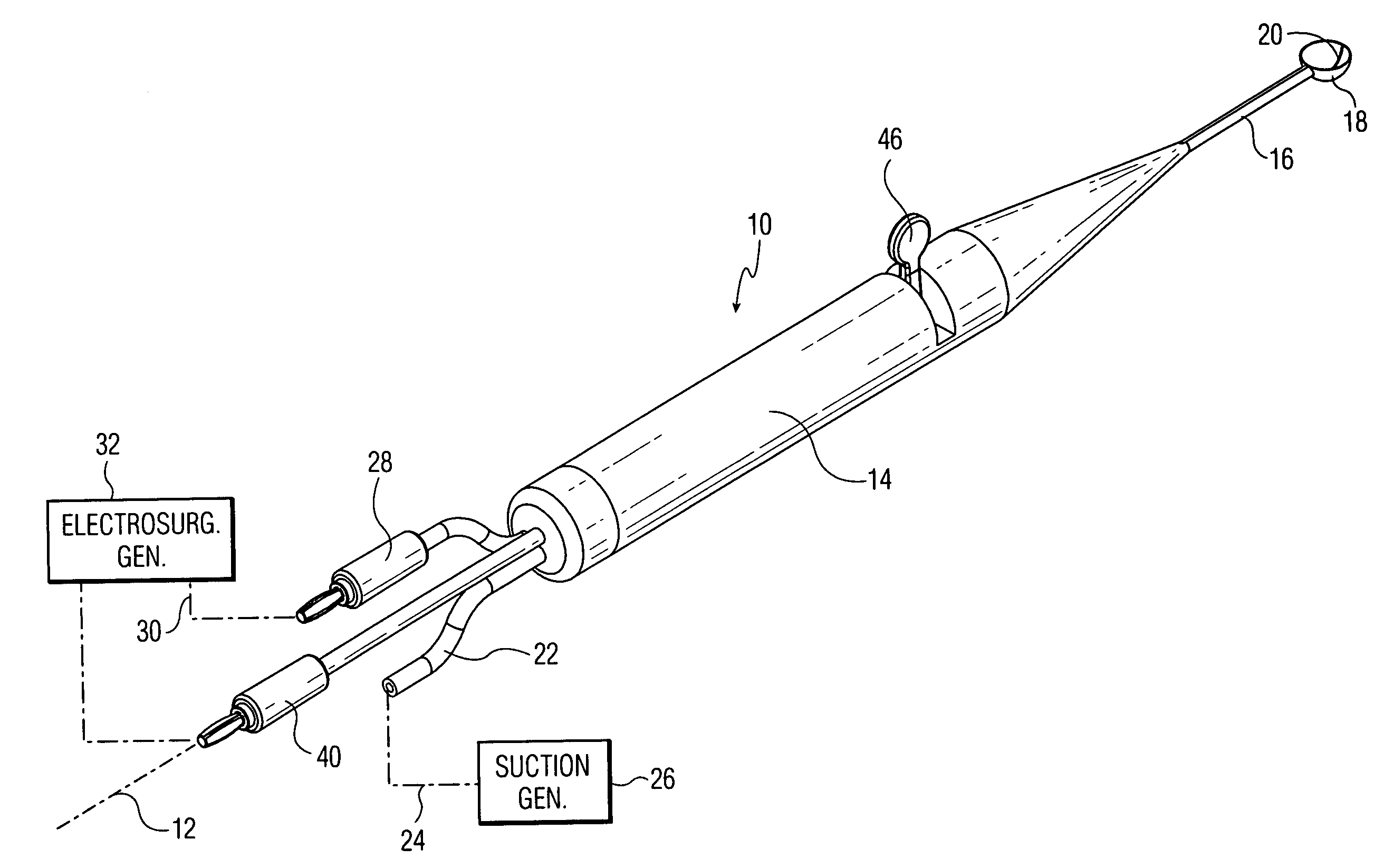RF intervertebral electrosurgical probe
a technology of electrosurgical probes and intervertebral electrodes, which is applied in the field of rf intervertebral electrosurgical probes, can solve the problems of insufficient preparation of the disc to accommodate the device, the degeneration of the adjacent discs, and the inability to completely eliminate the source of pain of patients, etc., and achieves the effect of small lateral heat spread and less damage to neighboring cell layers
- Summary
- Abstract
- Description
- Claims
- Application Information
AI Technical Summary
Benefits of technology
Problems solved by technology
Method used
Image
Examples
embodiment 60
[0039]FIGS. 6–10 illustrate another embodiment 60 of the invention wherein the tissue-clearing member is a rotary vane. In this embodiment, it is preferred that the cup have a cylindrical shape. In the perspective view of FIG. 6, the non-working end at the left of the drawing is similar to that in the FIG. 1 embodiment, with a suction tube 22, and two electrical connectors 28, 40 extending out of the back of the tubular housing 62 that serves as the instrument handle. There is also a thumb-activating lever 64 present in this embodiment that is operably connected to the working end at the right of the drawing. The working end in this instance comprises a cylindrical scoop- or cup-shaped member 66 along the center axis of which is mounted an axle 68 connected to a radially-extending vane or element 70. The mounting is such that the radial element can rotate in a plane parallel to the open face 72 of the cup together with its axle 68, when the latter is rotated. As before, one electrod...
first embodiment
[0042]In operation, the surgeon manipulates the handle 60 with the leading edge loop 74 active for unipolar operation while pressing the leading edge into the spinal tissue and forcing the tissue into the cup 66, the tissue in the cup being removed via the suction connection 22 and interior channel 55, whose opening into the cup is shown at 58. Whenever deemed necessary, the surgeon can operate the tissue removing lever 64 to cut off the tissue inside the cup from that outside the cup allowing the suction room to perform its extraction function. Alternatively, the surgeon can electrically activate the tissue-clearing vane 70 during this excising action or while the cup is being pressed into the tissue to obtain bipolar operation. As with the first embodiment, the instrument can be constructed with just the loop 74, or with just the vane 70, or with both as illustrated for the most versatility in operation. To ensure that the two electrodes remain electrically-insulated, it is prefer...
PUM
 Login to View More
Login to View More Abstract
Description
Claims
Application Information
 Login to View More
Login to View More - R&D
- Intellectual Property
- Life Sciences
- Materials
- Tech Scout
- Unparalleled Data Quality
- Higher Quality Content
- 60% Fewer Hallucinations
Browse by: Latest US Patents, China's latest patents, Technical Efficacy Thesaurus, Application Domain, Technology Topic, Popular Technical Reports.
© 2025 PatSnap. All rights reserved.Legal|Privacy policy|Modern Slavery Act Transparency Statement|Sitemap|About US| Contact US: help@patsnap.com



